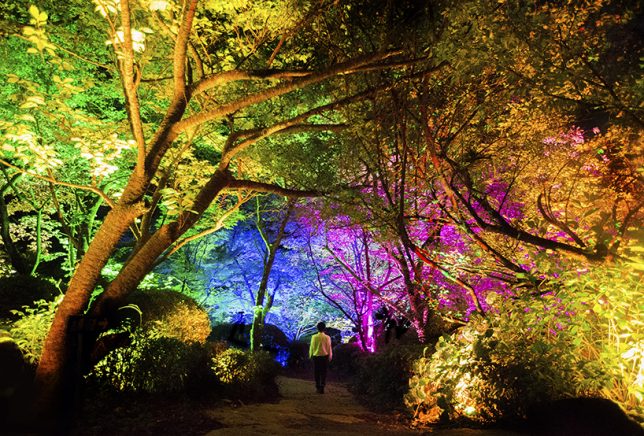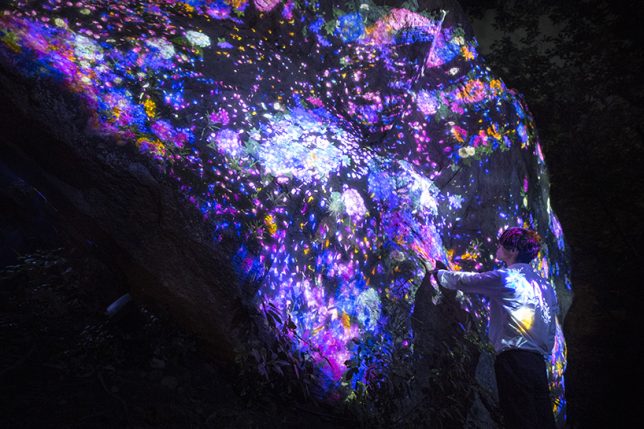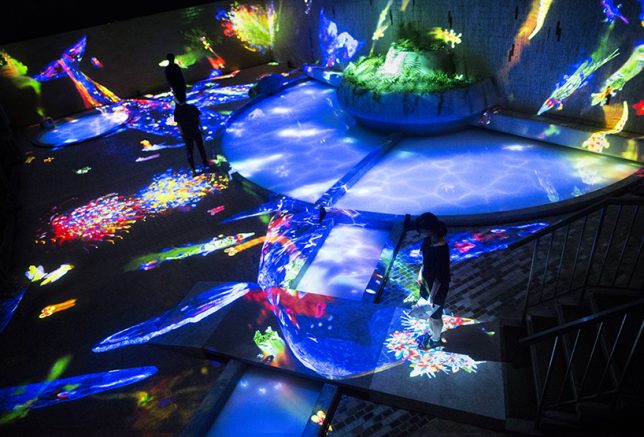Google has announced the Pixel 3 and Pixel 3 XL almost exactly a year after their predecessors debuted. The 5.5″ Pixel 3 and 6.3″ XL feature larger displays than the previous generation (5″ and 6″ respectively) but keep roughly the same size and weight.
In a world of dual and triple-camera arrays, Google is staying the course with a single rear-facing camera on each device: the same 12.2MP sensor with dual pixel autofocus and 28mm equiv. F1.8 aperture that appeared in the Pixel 2 and 2 XL. However, two front-facing cameras are now offered: a 19mm equiv. 8MP F2.2 with fixed focus designed for group selfies, and a 28mm equiv. 8MP F1.8 with phase detection autofocus.
$ (document).ready(function() { SampleGalleryV2({“containerId”:”embeddedSampleGallery_0806398624″,”galleryId”:”0806398624″,”isEmbeddedWidget”:true,”selectedImageIndex”:0,”isMobile”:false}) });
The real story, as it tends to be lately, is the software. Working with just one main camera, Google has doubled down on computational solutions to physical limitations. But there’s a silver lining to this approach: any techniques that make a single camera better will eventually make multiple cameras that much better once that approach is (arguably inevitably) adopted.
The Pixel 2 shot and aligned up to 9 frames for every image taken to maximize detail and reduce noise, and the Pixel 3 is now capable of shooting, buffering, and aligning up to 15 frames per shot. All still with zero shutter lag – you get the shot that represents the instant you hit the shutter button.
A new ‘Night Sight’ feature that combines multiple frames with long shutter speeds for extremely low light shots
There’s a catch, for now though. These extra frames are only used when zooming your image 1.2x or more, or when the environment is so dark as to require longer shutter speeds. That latter feature is called ‘Night Sight’ and it combines multiple frames with long shutter speeds for extremely low light shots. It does this using Google’s ‘robust merge’, which is able to effectively deal with subject movement without blur or ghosting.
Another computational feature called ‘synthetic fill flash’ understands human subjects and raises their exposure with a fill-flash effect. The result is often a nice warm glow on faces, particularly in backlit situations where they might otherwise be rendered dark.
Google uses super-resolution techniques to tackle the problem of poor image quality with digital zoom. By capturing multiple frames with sub-pixel resolution, the Pixel 3 can record detail finer than traditional approaches, which means that digitally zoomed shots, which crop and enlarge smaller portions of the frame, can – we’re told – compete with optical zoom approaches.
Particularly innovative about this approach is the removal of the need to demosaic: with pixel-level image alignment the Pixel 3 can combine images that have been off-set by one pixel shifts, which means that every color has been sampled at each pixel position in the final frame. No demosaicing means sharper images with less noise.
Official Google Pixel 3 sample images
$ (document).ready(function() { SampleGalleryV2({“containerId”:”embeddedSampleGallery_5730154109″,”galleryId”:”5730154109″,”isEmbeddedWidget”:true,”selectedImageIndex”:0,”isMobile”:false}) });
A new Top Shot feature is available when taking motion photos – the device constantly buffers images and captures alternates, using AI to suggest the best photo of the bunch, even if it was captured before the shutter was pressed.
Improvements have also been made to Portrait Mode. Google says its depth mapping is better, with a new learning-based approach that is better at judging background and foreground objects. The result is fewer depth map errors, more uniform blur across the frame, and more natural transitions from in focus to out-of-focus areas. The level of blur and point of focus can be changed after the fact. Continuous subject tracking is now available as well – tap a subject and the camera will track and maintain focus on it, in stills or video.
Google says its depth mapping is better, with a new learning-based approach that is better at judging background and foreground objects
In non-photographic improvements, the Pixel 3 and 3 XL boast more robust waterproofing with an IP68 rating. And this year neither display appears to have the viewing angle and hue shift issues of last year’s Pixel 2 XL. In our use so far, the displays appear to be right up there with the best we’ve seen.
Both the Pixel 3 and Pixel 3 XL will be offered in Just Black, Clearly White and Not Pink color variations, in either 64 or 128GB. The Pixel 3 starts at $ 799 and the 3 XL starts at $ 899.
Google Pixel 3. Make every day more extraordinary.
Today we’re introducing Pixel 3 and Pixel 3XL, the new smartphones from Google. Pixel brings you the best of Google in a phone, powered by AI to deliver more helpful, thoughtful, and enjoyable experiences. That means a phone that answers for you when a telemarketer calls, a camera that uses AI to make sure you never miss the shot, and a more helpful visual and audio experience while charging, powered by the Google Assistant.
Brilliant photos every time and super-charged selfies
We’re taking more photos on our phones than ever before, but we still often miss the perfect moment. Pixel 3 helps you get that perfect shot on the first try.
$ (document).ready(function() { SampleGalleryV2({“containerId”:”embeddedSampleGallery_5730154109_1″,”galleryId”:”5730154109″,”isEmbeddedWidget”:true,”selectedImageIndex”:0,”isMobile”:false}) });
Here’s how the best camera gets even better with Pixel 3:
- Capture smiles, not blinks: A feature we call Top Shot uses AI to help you capture the perfect photo every time. When you take a motion photo, it captures alternate shots in HDR+, then recommends the best one—even if it’s not exactly when you hit the shutter, looking for those where everyone is smiling, with eyes open, and facing the camera. Top Shot automatically captures alternate shots in HDR+. If your timing wasn’t perfect, the camera will suggest a better one and give you the option to save it.
- Get better zoom: When you zoom in on a phone camera, the image looks grainy. Super Res Zoom is a computational photography technique, traditionally used for astronomy and scientific imaging, that produces sharp details when you zoom.
- No light; no problem: Pixel 3 lets you take natural-looking photos in dark surroundings, all without a flash. With Night Sight, coming soon to Pixel 3, you can take bright, detailed, colorful shots around the campfire, in a moonlit forest, or a selfie after you close out the bar.
- No selfie stick required: Get everyone in the picture with Group Selfie, which gives you 184% more room in your photo for friends and scenery.
- Look … no hands! Photobooth mode uses AI to recognize that when you’re smiling or making a funny expression, you’re ready for a selfie. It snaps the photo on its own so that you don’t need to reach for the shutter button—a good option for candids.
- Even more stunning portraits, front and back: When you take photos in Portrait Mode, you can change the blurriness of the background, or change the part of the picture in focus, after the fact. Google Photos can also make the subject of your photo pop by leaving them in color, while changing the background to black and white.
- Create and play: In Playground, you can make photos, selfies, and videos come to life by adding your favorite superheroes, animated stickers, and fun captions. In celebration of Marvel Studios’ 10 Year Anniversary, you’ll enjoy seeing the characters from the Marvel Cinematic Universe (exclusively on Pixel) react to each other and to you.
- Super smooth video: When you want to capture something that won’t stop moving—think an adorable toddler or your new puppy—Motion Auto Focus will make sure your Pixel 3 camera stays in sharp focus automatically, as you record. And if you happen to be taking a selfie video while walking or moving around, Pixel 3 brings you front-facing video stabilization.
Unlimited storage for all of your photos and videos
With Pixel 3, you can save all your favorite moments with free, unlimited photo and video storage in original resolution. It’s hassle-free, you don’t have to think about back-ups. Come back to Google Photos later and search for the beach photos you took on your Pixel 3, and they’ll pop right up.
Your AI-powered sidekick
The AI in Pixel 3 enables new features that make your day-to-day actions simpler and easier.
If you want to know more about something you’re looking at, use Google Lens, built right into the Pixel 3 camera. To scan and translate text, find similar styles of clothing, or identify popular plants and animals, you can now long press in the Pixel 3 camera to easily open Lens. When you point your camera at information you want to remember or don’t feel like typing in—like a URL or QR code on a flyer or an email address on a business card—Google Lens suggests what to do next, like creating a new contact.
You can count on even more help across other apps too, including Gmail’s Smart Compose, now available for mobile on Pixel 3. Smart Compose suggests phrases in your emails so that you can draft them faster, on the go. Gboard, the keyboard built into your Pixel 3, will recommend GIFs, stickers, and more, to make your conversations fun and engaging. Available first in English.
The Google Assistant is also baked into Pixel 3 to help you find answers and control your phone and compatible smart home devices—all with a simple squeeze or just by using your voice. This year we have two new Assistant features coming to Pixel:
First, Pixel 3’s on-device AI helps you screen phone calls and avoid spam calls. Imagine you’re at dinner with family or in a meeting at work and a call from an unknown caller comes in. Just tap on “Screen call” to find out who’s calling and why, as well as other information (as prompted by you). You’ll immediately see a transcript of the caller’s responses so that you can then decide whether to pick up, respond by tapping a quick reply (e.g. “I’ll call you back later”), or mark the call as spam and dismiss. Processing the call details on-device means these experiences are fast, private to you, and use up less battery.
Second, Pixel users also get help with making calls. Later this year, Pixel users will be the first to get access to an experimental new Google Assistant feature, powered by Duplex technology, which helps you complete real-world tasks over the phone, like calling a restaurant to book a table. This feature will initially be available in New York, Atlanta, Phoenix and San Francisco to help people book restaurant reservations and will roll out to other cities in the future.
As we develop new calling technologies, we believe it’s critical that we help users understand the context of the conversation. We’ll disclose to businesses receiving the call that they’re speaking to an automated system, and we have developed controls to protect against spam and abuse, as well as the ability for a business to opt-out of receiving calls. For Call Screen, we will also let the caller know that a screening service is being used.
Digital Wellbeing
Our phones, while probably the most important tech in our lives, shouldn’t control our lives. So Digital Wellbeing, a suite of tools to help you find your own balance with technology, is built into Pixel 3. It includes a dashboard to help you understand how you spend time on your phone, the ability to set time limits on specific apps, and a new Wind Down mode to help you get to sleep at night by gently transitioning your display to a grayscale screen. When you don’t want to be bothered by rings or notifications, just flip to Shhh— an easy gesture that turns on Do Not Disturb and minimizes distractions.
Fast and wireless charging
Pixel 3 comes with an 18 Watt fast charger in the box, which can give you 7 hours of use in 15 minutes of charging. With our AI-powered Adaptive Battery technique, Pixel 3 prioritizes battery power for your most important apps to make your phone last all day.
Alongside Pixel 3, we’re also introducing Pixel Stand, our new, Qi compliant wireless charger (sold separately). While charging in the Pixel Stand, your phone turns into a smart visual and audio experience powered by the Google Assistant, similar to Google Home Hub. It answers your questions, plays music, helps you control smart home devices, transitions into a photo frame when idle, and much more. If you set an alarm, your screen will gently brighten over 15 minutes before your alarm goes off, mimicking the sunrise and helping you wake up naturally.
Pixel 3 is IP68 water and dust resistant and has a security chip custom-designed by Google called Titan M, making it the most secure phone we’ve built yet. Titan M enhances mobile security by protecting your unlock credentials, disk encryption, app data, and the integrity of the operating system code itself. Powered by Android 9 Pie, Pixel 3 comes with the latest Android operating system.
You can choose from two sizes – the 5.5” Pixel 3 and the 6.3” Pixel 3 XL – and three colors – Just Black, Clearly White, and Not Pink. Both have the exact same feature set and include a high quality Pixel USB-C earbuds and a USB-C Digital to 3.5 mm headphone adapter in the box. Pixel 3 comes with dual front-firing speakers tuned by a GRAMMY award-winning music producer to turn your phone into a powerful speaker. Customers who activate a Pixel 3 or Pixel 3 XL by December 31, 2018 can get 6-months of free YouTube Music Premium.
Articles: Digital Photography Review (dpreview.com)



 Just last week, Canon announced the long-awaited 1D X Mark III, a flagship DSLR tailored to action and wildlife photographers. The new camera comes as a successor to the Canon 1D X Mark II, which set the tone for sports photographers everywhere.
Just last week, Canon announced the long-awaited 1D X Mark III, a flagship DSLR tailored to action and wildlife photographers. The new camera comes as a successor to the Canon 1D X Mark II, which set the tone for sports photographers everywhere.












You must be logged in to post a comment.